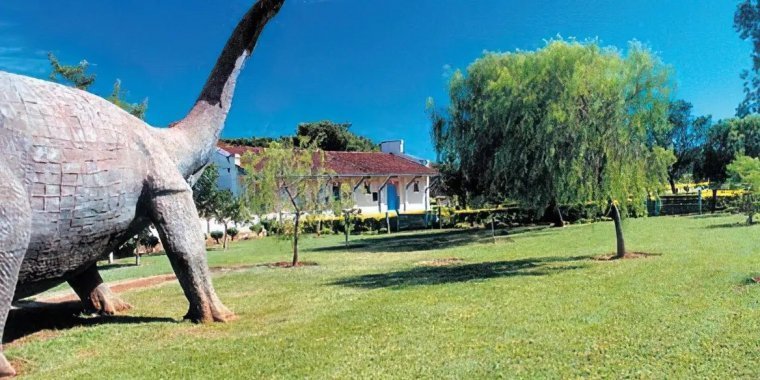| News / World News |
Brazilian geopark receives UNESCO recognition
The Terra dos Gigantes (Land of the Giants) geopark in Uberaba, located in the Triângulo Mineiro region of Minas Gerais state, has been designated as a UNESCO (United Nations Educational, Scientific, and Cultural Organization) World Geopark.

Brazilian geopark receives UNESCO recognition. Photo: Agência Brasil
This expansive area is a treasure trove for paleontological and geological research. With this latest recognition, Brazil now boasts six internationally recognized geoparks.
Geoparks are defined as geographical areas with geological heritage of international significance. The management of these territories is focused on preserving their natural, historical, and cultural heritage, while also promoting education, tourism, and sustainable development.
On March 27 of this year, UNESCO added 18 new parks to its list, bringing the total to 213 across 48 countries. The Brazilian geopark's UNESCO recognition was based on studies conducted by the Geological Service of Brazil (SGB) that started in 2012.
The Uberaba Geopark spans 4,523.957 square kilometers, encompassing the entire municipality of Minas Gerais. Fossils, teeth, eggs, and clutches of dinosaurs from the Upper Cretaceous period, estimated to be between 80 million and 66 million years old, have been discovered in the region.
A standout discovery is the bones of the Uberabatitan ribeiroi, the largest dinosaur ever found in Brazil—one of the last titanosaurs (from the Latin "titanic lizard") on the planet, measuring 27 meters long and 14 meters high.
The SGB has reported the discovery of fossils of large carnivorous theropods in the area, including the Abelissaurus (Abelisaurus comahuensis), which stood around eight meters tall. Additionally, crocodilomorphs, such as the Uberabasuchus terrificus, have been found and are displayed at the Peirópolis Dinosaur Museum, located within the Uberaba Geopark.
Geologist Carlos Schobbenhaus, one of the creators of the SGB Geoparks Project and co-author of the study supporting the geopark's application, explains the significance of this geopark and its geoscientific relevance.
The area is renowned for its dinosaur fossils and other significant species. It features geosites of paleontological interest that are open to visitors and require geoconservation, as they have been the sites of fossil discoveries and hold the potential for new findings.
The Terra dos Gigantes geopark comprises six geosites (Ponte Alta, Caieira, Univerdecidade, Serra da Galga, Santa Rita, and Vale Encantado) as well as two non-geological sites (the Dinosaur Museum and the Lime Museum).
Uberaba's archaeological sites have attracted paleontological research since the 1940s. In 2012, the SBG presented a study that formed the basis of the region's application for worldwide recognition by UNESCO.
According to the Minas Gerais Secretariat of Culture and Tourism, this recognition "places Uberaba and the state on a new tourist route, leading to increased economic development, employment, and income for the region."
Another point emphasized by the secretariat is that the UNESCO seal enhances the promotion of scientific research on geological heritage and fosters the appreciation of the area's cultural and historical significance.
The other Brazilian geoparks include Seridó in Rio Grande do Norte state, Araripe in Ceará state, and Caminhos dos Cânions do Sul, Quarta Colônia, and Caçapava do Sul, all in Rio Grande do Sul state.
The global geopark designation is valid for four years. After this period, the regions undergo a revalidation process, during which the operation and quality of each unit are reassessed. (Freitas Moura/Agência Brasil)
YOU MAY ALSO LIKE





